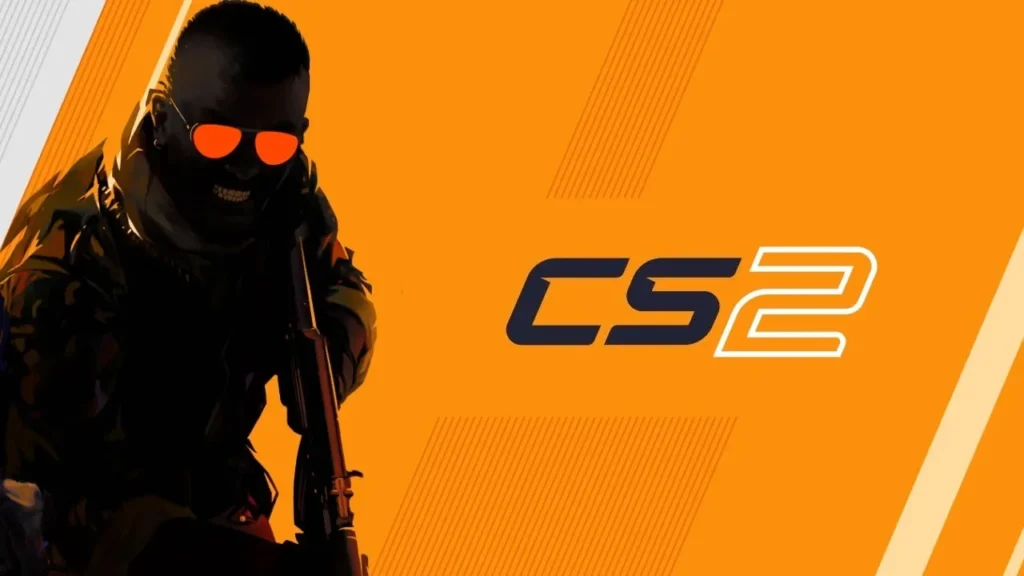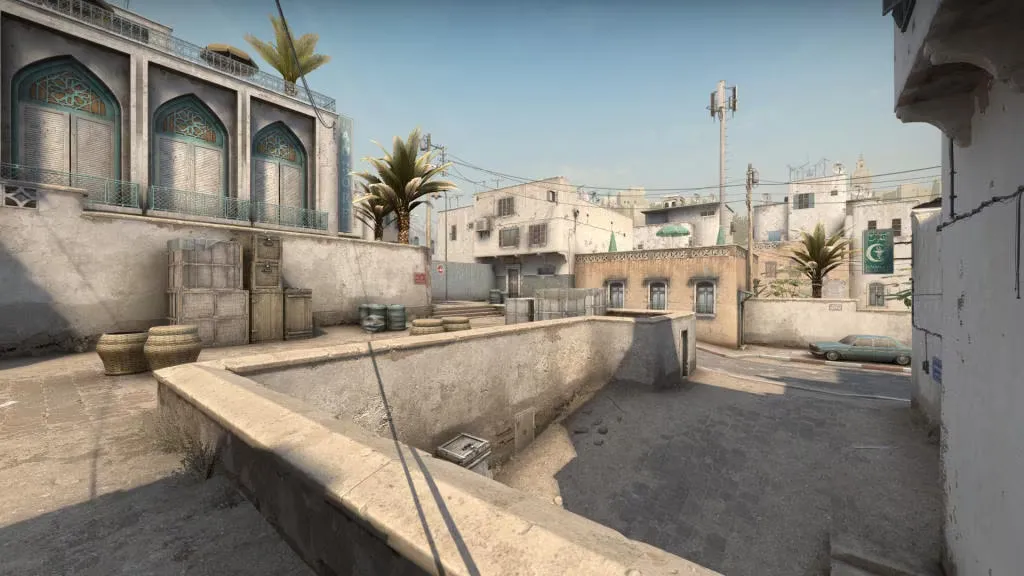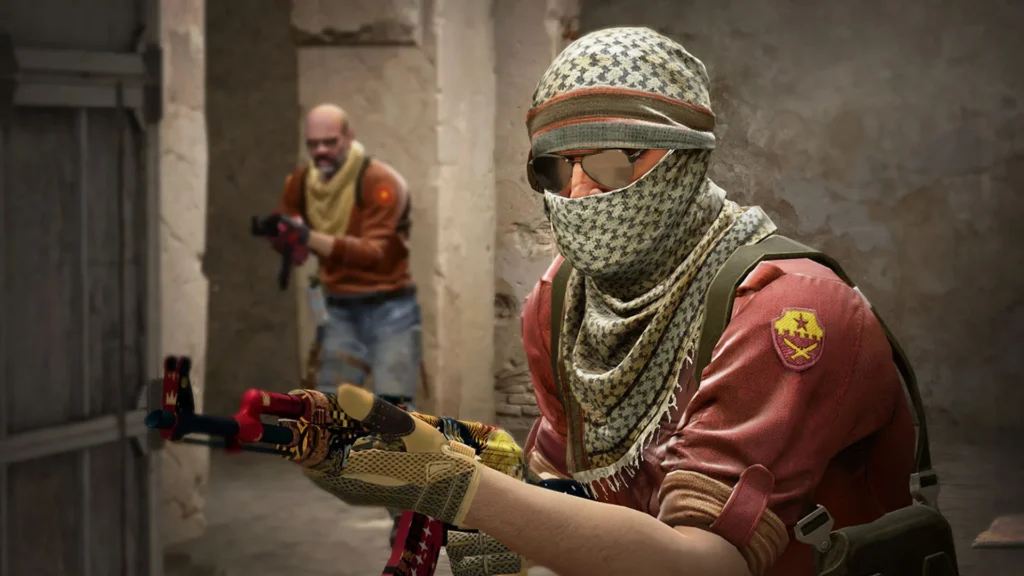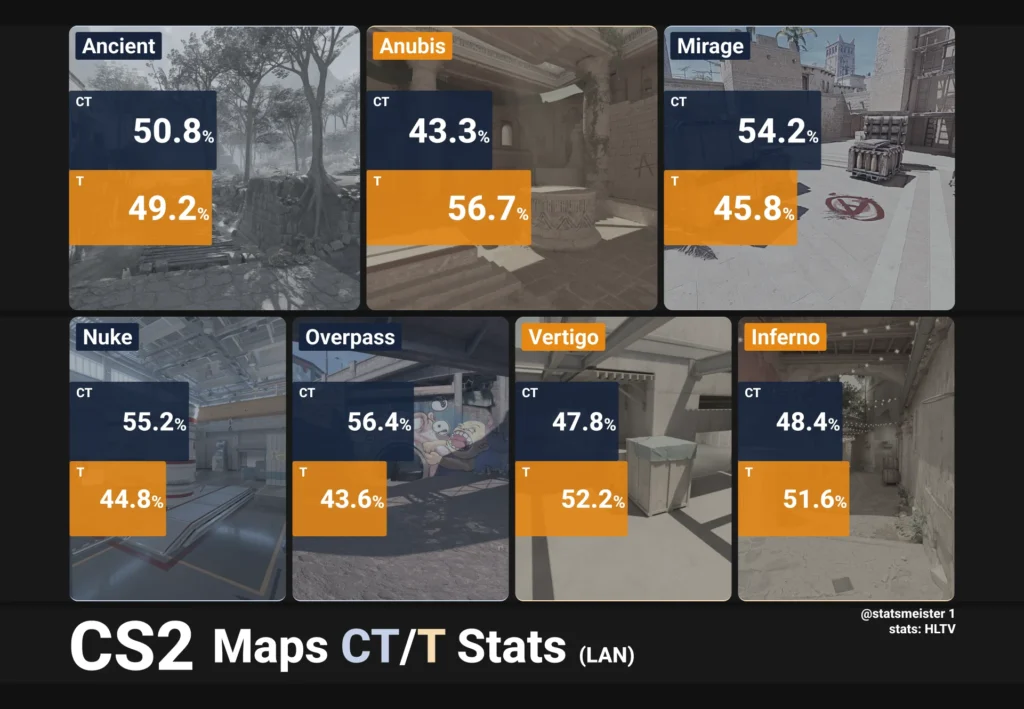CS2 Expectations vs. Reality: Conclusions from the First Season – What Has Changed in Gameplay?

The first full season in CS2 has concluded, and with professional teams on break, it’s the perfect time to take stock. The transition to CS2 introduced numerous in-game changes that significantly impacted the gameplay. In this article, we highlight the most important aspects, recall the expectations post-release, and compare them with the reality after some time has passed.
Transition to MR12

Undoubtedly, the most significant change in the game was the switch to MR12 (Max Rounds 12), which was met with mixed reactions. It’s no secret that for VALVE, esports isn’t the primary focus of Counter-Strike, so most changes are geared towards casual players. For the average player, shorter match durations are beneficial as they consume less time, allowing more matches to be played within the same timeframe. However, professional players had to adapt and make substantial changes to their gameplay. Formulating team economy strategies became more challenging during matches, and comebacks seemed tougher to achieve. The importance of pistol rounds increased, as winning each half provided a solid chance of securing 6 rounds, nearly half the number needed to win the match. The professional community anticipated economic changes, but these were minor and occurred only towards the end of the season, affecting just 5-10%, which we will discuss later.
Initially, many concerns and questions were justified. However, in practice, comebacks are still possible even with a halftime score of 2:10 or 1:11. Teams often resolve the issue of lost pistol rounds by opting for full eco rounds in case of a loss, effectively turning 6 rounds into 4. Everyone has adapted, and it cannot be said that there were numerous instances where a truly strong team lost a match solely due to losing pistol rounds.
The faster match pace seems to benefit both viewers and players, as we no longer see 5-hour BO3 series where teams play on their last legs. Although there is a caveat with the BO1 format, the outcomes of most matches appear fair and justified. We witnessed a few upsets in the early stages of the Major, as has happened before, and in the later stages, all favorites justifiably reached 2-3 in the Swiss stage or advanced to the playoffs. A complete overhaul of the economy could make things even fairer, but VALVE’s policy of “if it isn’t broken, don’t fix it” is likely to stay with us for at least a couple more seasons.
Advantage of the First Peeker, "Killing" Snipers, and Movement Changes

The main headache for all CS veterans is the change in movement mechanics and new shooting nuances, which were officially unaltered but felt significantly different. Experienced players could navigate the map blindfolded, knowing all the texture corners and how the player model behaves during short and wide strafes. In CS2, they had to relearn all this and dedicate time to training these aspects of the game, which were previously automatic and required no separate practice. Those who realized this quickly were ahead in the first half of the season, while others caught up through natural gameplay and gradual adaptation.
The primary issue was the advantage of the first peeker, as the strafe became much wider, allowing players to catch opponents off guard. By peeking an opponent first, players could see the enemy model slightly earlier, gaining the “first peek advantage.” Many predicted that snipers would become obsolete, with everyone rushing to find the first contact before the opponent. However, due to this false perception, the community lost a potentially strongest team, witnessing their struggles without a dedicated sniper for about six months. As you know, the team disbanded, and snipers found new safe angles and learned to place their crosshairs correctly, reducing the attacker’s chances of success. Aggressive snipers like m0NESY started peeking with AWP themselves and doing it flawlessly.
Throughout the season, VALVE worked on the newly emerged “imbalance,” resulting in the meme “Michael Jackson Peek,” but eventually managed to balance it. They balanced it rather than simply “killing” it, earning deserved respect.
Balance Between Attack and Defense

Since the dawn of CS, developers have aimed to eliminate the hegemony of counter-terrorists and balance both sides. The first indication was the map Anubis, where the attacking side was significantly stronger, making it a priority pick. With the release of CS2, it became evident that VALVE intended to balance the sides, supported by both gameplay experiences and statistics. Almost all maps in CS2’s competitive scene are currently balanced, noticeable even to the naked eye.
Pro teams continue to pick defense as the more advantageous side, but often ending a half with a 7:5 score isn’t considered a bad result. This balance has led to more comebacks and exciting offensive plays, forcing the defense to act more creatively to utilize their defensive dividends effectively. Developers made a significant update to this aspect, as mentioned earlier. Seeing that the attack was gaining too much and tipping the balance in their favor, the reward for planting the bomb if it was defused was adjusted, and the cost of the M4A4 and incendiary grenade was reduced by $100. Many argue that this didn’t change much, but it actually worked to everyone’s benefit. VALVE likely didn’t aim to restore the power dynamics as in CS completely.
Changes in Smoke Grenade Mechanics

There’s not much to elaborate on here, but it would be a mistake not to mention this aspect. When the community saw the smoke mechanics in CS2 promo videos, everyone said it would be a game-changer, though it wasn’t clear in which direction. Over time, it can be said that everything turned out balanced, with both sides finding advantages in the new mechanics. The structure of smokes also changed, filling all possible spaces and nearly eliminating one-way smokes. However, more reliable and voluminous smoke walls and the ability to close some areas with a single grenade were gained, where previously two were needed.
This added spectacle, variety, and allowed players to act more aggressively or, in some cases, more securely.
Open Skyboxes
This was quite obvious, but initial conclusions didn’t match reality. It seemed like an unreal imbalance that would allow the defense to suffocate the attackers right from spawn, preventing them from occupying any points on the map. However, smokes take a while to travel, and it doesn’t work as unbalancedly as feared. Instead, it diversified the ability of both sides to assist their teammates with the necessary grenades.
Conclusions
From September 2023 to June 2024, CS2 has evolved from a raw product into a worthy version of the game. Most importantly, the logic behind changes and fixes is evident, clearly aimed at creating perfect balance. Over these 9 months, VALVE has nurtured a healthy offspring that has just begun its journey and will continue to evolve. We didn’t dwell on the questionable content at the Major, remaining anti-cheat issues, and the controversial tick rate, as criticizing developers has become too fashionable. It’s better to focus on the positives and highlight the beneficial actions. Only by doing so can we continue to love CS and enjoy playing and watching it, which we wish for you too!